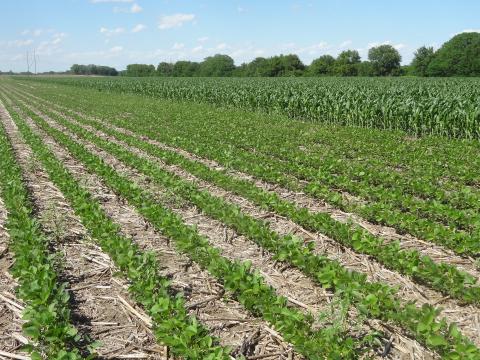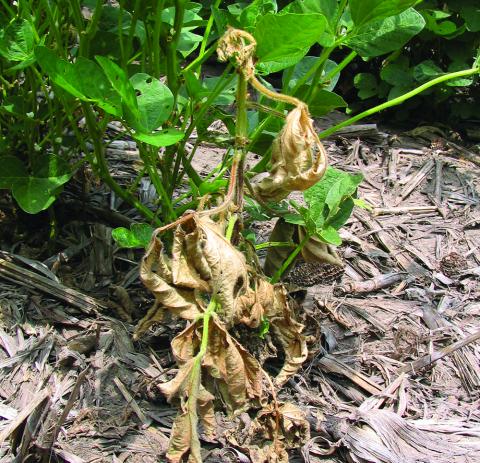USDA-NASS: Corn 74% Good-Excellent, Soybean, 70%, Wheat, 48%
Dry conditions across much of Nebraska allowed wheat harvest to begin, according to the report from the USDA National Agricultural Statistics Service for the week ending June 25.
Topsoil moisture supplies rated 14% very short, 42% short, 44% adequate, and 0% surplus. Subsoil moisture supplies rated 7% very short, 33% short, 60% adequate, and 0% surplus.
Consider Application Restrictions of Postemergence Herbicides Based on Soybean Growth Stage
Nebraska Crop Conditions (NASS, 6/19/17)
Japanese Beetles Emerging in Corn and Soybean
Nebraska Crop Progress and Condition
For the week ending June 11, Nebraska temperatures averaged four to eight degrees above normal and were accompanied by dry conditions, according to the USDA’s National Agricultural Statistics Service. Only the southern tip of the Panhandle and a few central counties received significant rain. The warm, dry weather allowed planting and other field work to continue.
Control of Glyphosate-Resistant Volunteer Corn in LibertyLink Soybean
Conditions Favor Early Season Soybean Diseases Again This Year
USDA: Planting Surges with Warm, Dry Conditions
For the week ending June 4, with warmer temperatures and rain limited to the western Panhandle, planting progressed with 6.4 days suitable for fieldwork, according to the June 5 report from the National Agricultural Statistics Service.





